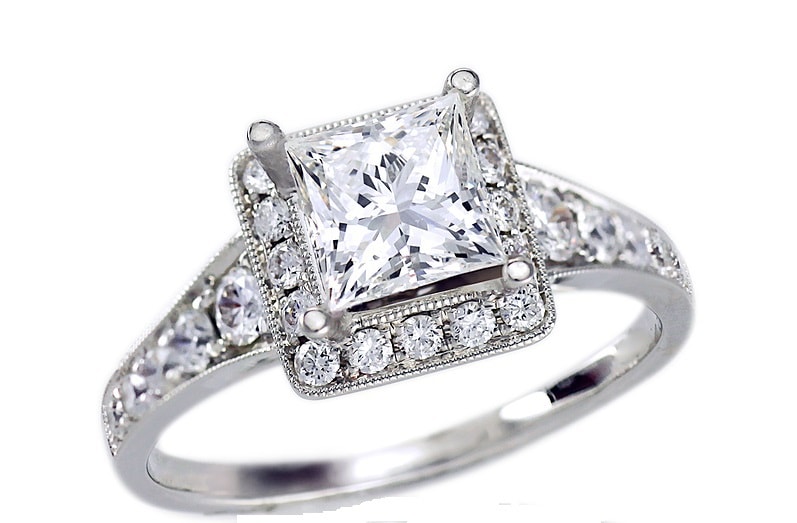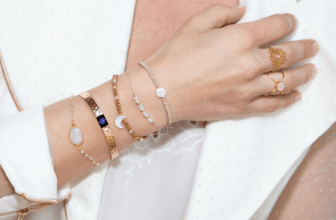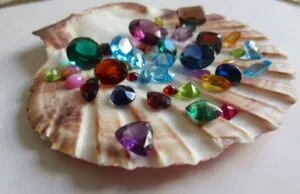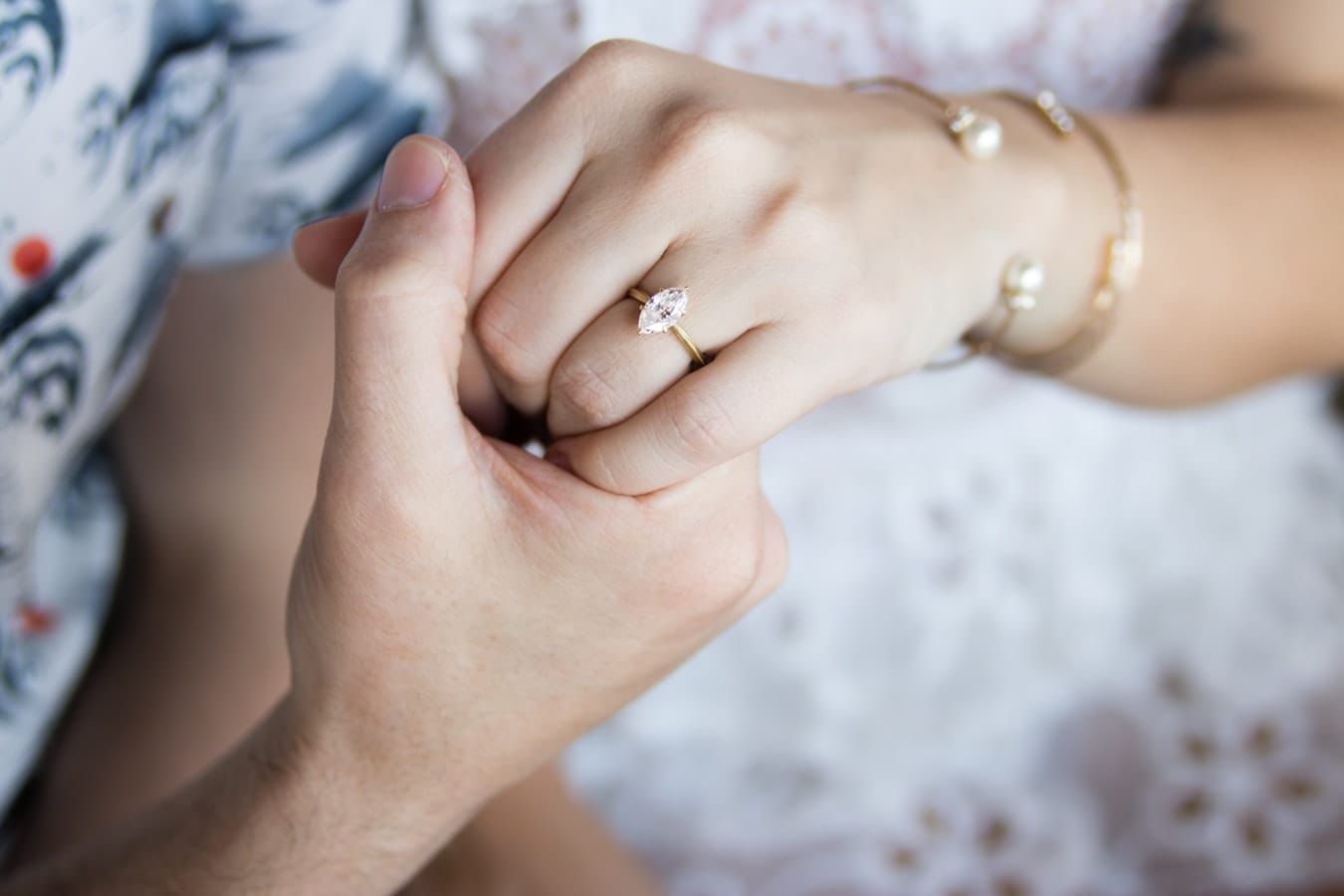
Table of Contents
The Marquise cut is one of the most interesting of all the diamond cuts, with a stunning appearance and a unique back story. It dates back to the 18th century, when Louis XV of France ordered his royal jewelers to create a diamond cut inspired by his lover’s lips. If you’re looking for an affordable diamond that stands out, this just might be it. Let’s take a look at the pros and cons of the Marquise cut and what makes it an excellent choice for engagement rings.
Pros and Cons of Marquise Cut Diamonds
The Marquise cut offers many advantages for engagement rings and diamond jewel, but there are also some downsides to consider. Here’s a quick rundown of the pros and cons of this diamond cut.
Marquise Cut Diamond Pros
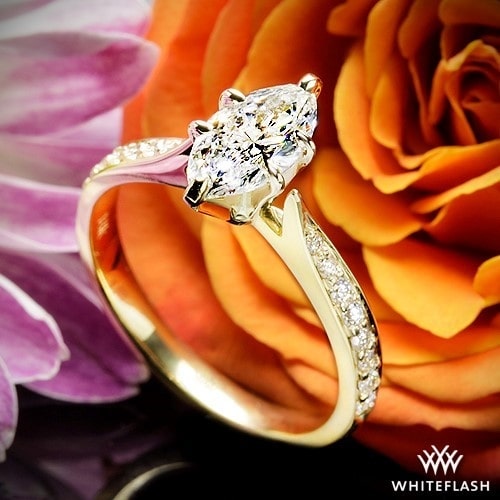
- Looks Large: Marquise cut diamonds look larger than their per carat weight compared to other cuts, like the round brilliant. As our eyes run down the length of the cut, we’re tricked into seeing it as larger than it really is.
- Elongates the Fingers: Elongated shapes such as the marquise, pear and oval cuts tend to make your finger appear longer and thinner. This complements any hand, and is especially perfect if you have short or chubby fingers.
- Affordable: The marquise is a relatively affordable cut, costing less than more popular cut options like round, princess, or cushion.
- Hides Flaws: Because of the many facets of a marquise cut diamond, this cut is great at hiding flaws like color and inclusions. This means that you can save on your diamond by dropping a little lower on the color and clarity scales.
Marquise Cut Diamond Cons
- Bow-Tie Effect: The biggest issue with marquise diamonds is the bow-tie effect, which can mar the beauty of the stone. Read more about this phenomenon below.
- Vulnerable: The pointed ends of the marquise cut are quite sharp and vulnerable, meaning that they can easily chip if dealt a hard blow.
- Not as Brilliant: While the cut is brilliant, it doesn’t have the same sparkle as a round or princess cut diamond.
What Is the Marquise Cut?
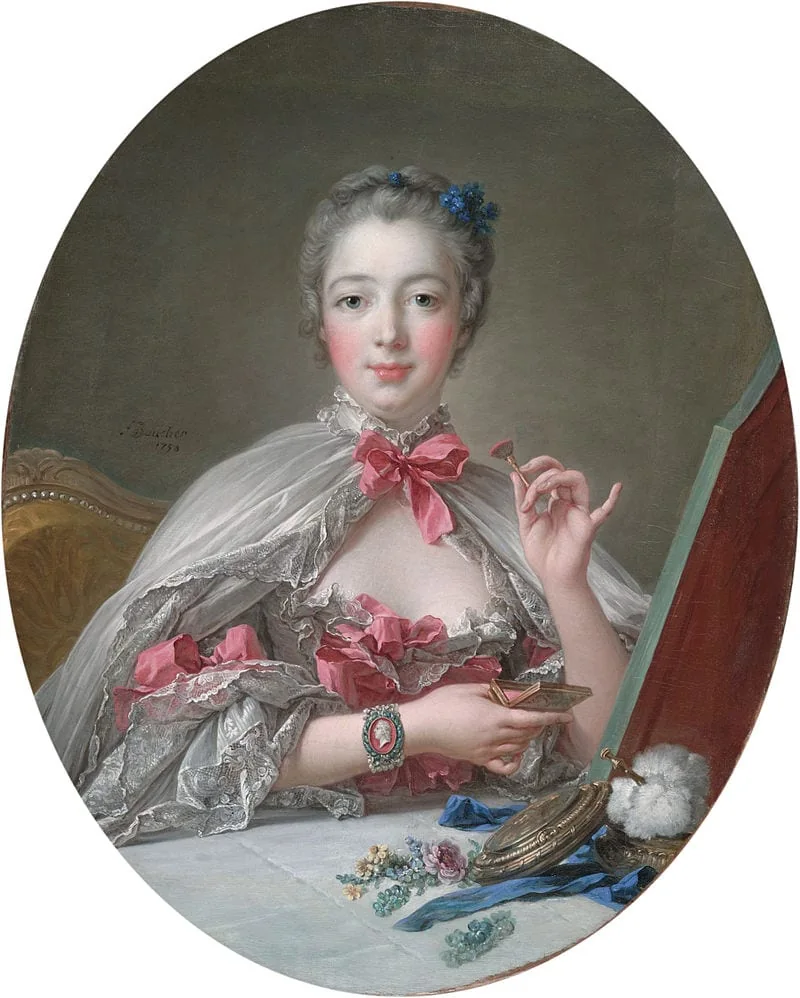
The Marquise cut, sometimes called the navette (French for little ship), originated in the 18th century French court of King Louis XV. The king, out of love for his mistress Marquise de Pompadour, ordered a diamond to be cut in the shape of her lips. The cut was named after her court title.
Featuring 56 facets, the Marquise cut is features an elliptical shape, with points on either end. It’s appearance can vary depending on the length to width ratio of the diamond. While the classic Marquise cut has a ratio of 1.75 to 2.25, how slender you want your Marquise diamond depends on your personal preference.
While the Marquise cut cannot match the brilliance and sparkle of round diamond cuts, it has a unique luster that gives it an edge in terms of class and beauty. The cut is gorgeous in pendants and earrings, but are also ideal for engagement rings.
Evaluating the Marquise Cut Using the 4Cs
1. How to Choose Marquise Cut Quality
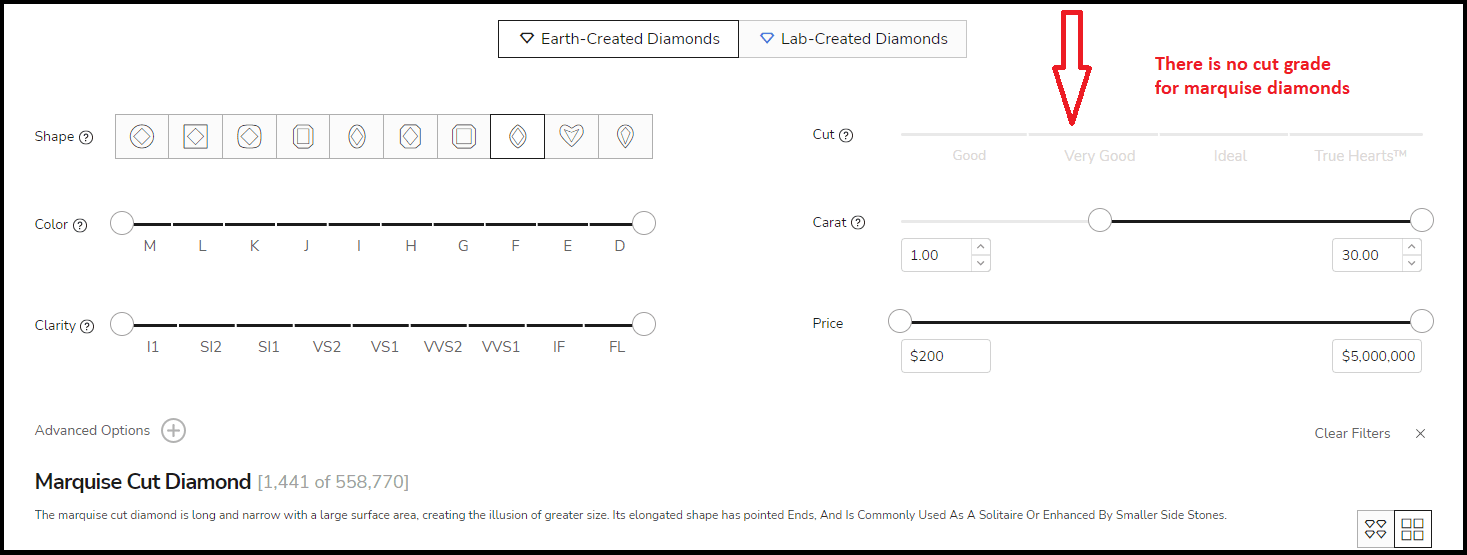
When it comes to Marquise diamonds, we can’t overstate just how important the cut is! Cut impacts the sparkle and symmetry of this shape, and can make or break the stone. You’re best not compromising on cut – it’s the most important factor.
But unfortunately, the GIA does not grade the cut of fancy shaped diamonds, meaning that you are essentially on your own when evaluating the cut of a Marquise shaped diamond. This is why it’s important to carefully inspect the stone’s appearance to make an informed decision about its cut quality.
For a Marquise cut, we’d recommend the following grades for these specifications. It will give you an equivalent to an Excellent cut grade.
| Excellent Grading ( % ) | |
| Table | 53 – 63 |
| Depth | 58 – 62 |
| Girdle | Very Thin – Slightly Thick |
| Pavilion Depth | 42. 8 – 43. 2 |
| Length to Width Ratio | 1.85 – 2.00 |
| Culet | None |
Another critical factor to consider when choosing a Marquise diamond is symmetry. The two ends of the diamond should be perfectly aligned, while the left and right sides should mirror each other closely. If there is any defect in the symmetry, however slight, the diamond will look off-balance. Always look for excellent symmetry when selecting a Marquise cut diamond.
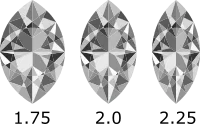
You’ll also have to consider whether you want a squat or elongated Marquise diamond. If you choose a length to width ratio below 1.85, you will end up with a squat stone, while a ratio above 2.0 will result in an overly elongated Marquise. For pendants and drop earrings, elongated Marquise shapes are best, while a more balanced ratio is preferred for engagement rings.
How to Choose Marquise Diamond Color
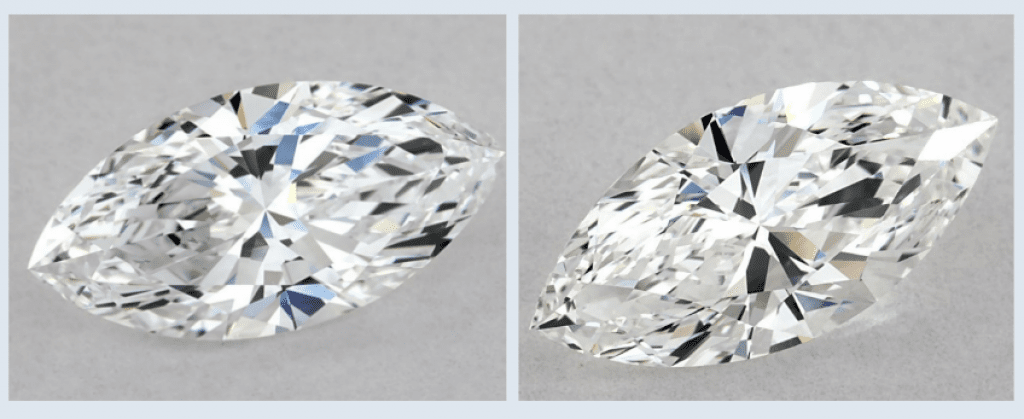
While the D-F colorless diamonds are the most popular choice, they’re also the priciest. However, the difference between the grades are often negligible and can hardly be perceived by the naked eye. Take a look at the D and F diamonds above. The difference is hardly noticeable.
Because larger Marquise cut diamonds can appear darker at the points, you can choose a lower color grade and still have a gorgeous colorless stone. For an Excellent grading for color in a Marquise cut diamond, look for these specifications:
| .50 carat Diamond or Smaller | D-G color is Excellent. Avoid L-M grades for a Fair to Poor rating. |
| .50 – 1.0 carat Diamond | D-F is Excellent. Avoid grading K onwards which will give you a Fair-Poor grade. |
| 1.0 – 2.0 carat Diamond | D-F will is Excellent but avoid grading I onwards. |
| 2.0 carat Diamond and Larger | D-F grades are recommended but avoid H onwards. |
If your ring metal is yellow or rose gold, you can opt for a diamond with warm tones as this will not be very noticeable next to the metal. This is a great way to save on the price of your diamond, as the further down the color scale you go, the more the price of the stone drops (all else being equal).
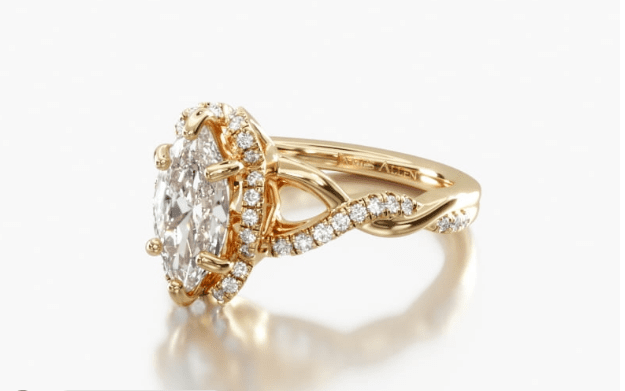

As you can see from the two settings above, the yellow gold setting minimizes any color in the diamond, blending into it to create a seamless transition from metal to stone. Because the basket of the setting also impacts how a diamond can appear, some jewelers choose to place a yellow or rose gold basket in a white gold setting to hide any yellow tints in the stone.
Conversely, white metals can highlight yellow tints, making the stone appear yellower than it is. But if you choose a D-F color grade, a white metal setting can accentuate the colorlessness even more, enhancing its cool tones.
How to Choose Marquise Diamond Clarity
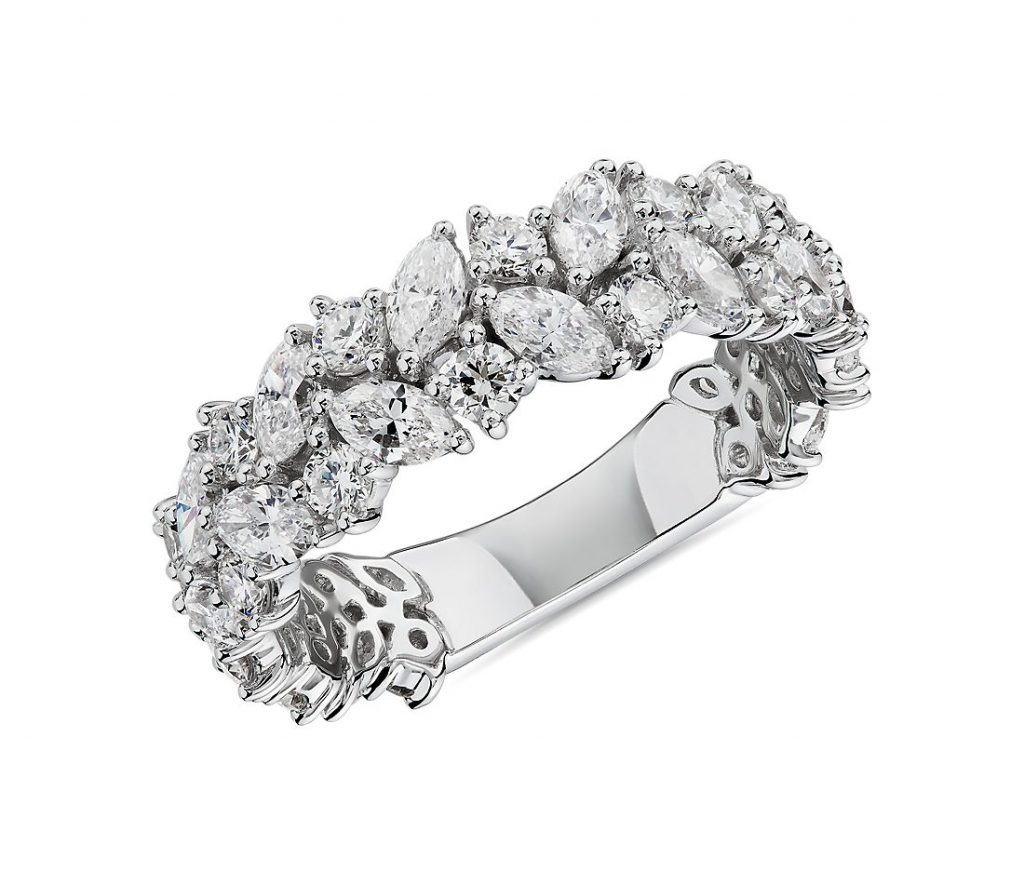
Ask yourself the question: Are there any visible inclusions in the diamond? For clarity, the grade doesn’t matter as much as how the stone looks. You can sometimes find a stone that looks great but has a low clarity grade. This saves you money without having to compromise on the beauty of the diamond.
However, there is a caveat to this when it comes to Marquise shaped diamonds. If there are inclusions located at the end points of the diamond, it can weaken these points and compromise their integrity. However, an expert craftsperson can strengthen the diamond by using a quality setting to protect any vulnerable points. One way is to opt for V-shaped prongs, which not only hides any inclusions at the points but will also add a buffer zone for the diamond.
To check the clarity of a diamond, it’s important to see images of the actual stone. Always request images or videos (even better!) before you buy. In our experience, being able to see the actual diamond rather than simply a stock photo allows you to cherry pick the perfect stone from the lot. It also allows you to save on your stone as you could pick a stone with a lower clarity grade but with no visible inclusions.
Watch Out For the ‘Bow-Tie’ Effect!
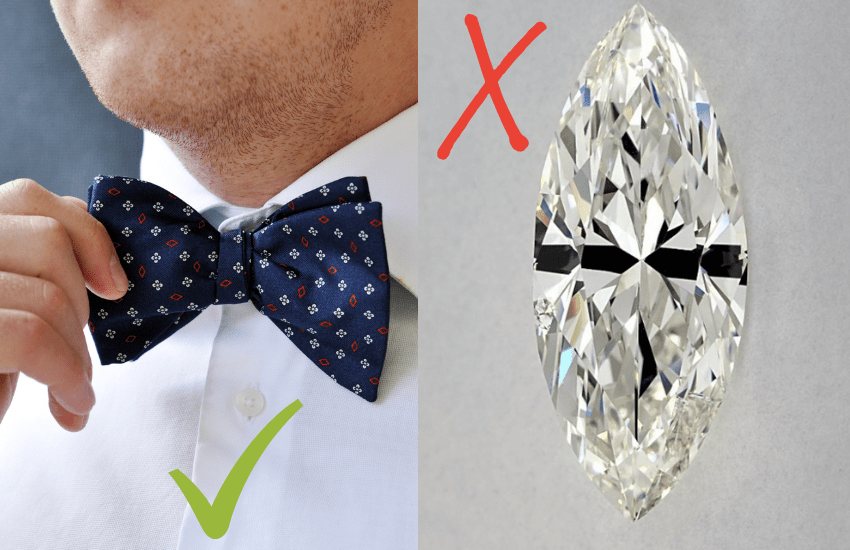
All elongated fancy cut diamonds, such as the Marquise, pear and oval cuts, are susceptible to having the bow-tie effect. And no, it’s not a good thing! You don’t want your diamond to show a severe bow-tie.
A bow-tie occurs when there’s a darkened area in the shape of a bow-tie that runs across the center of the diamond. This happens when the cut is poor and there are misaligned facets. What this does is to cause light to move out of the pavilion, rather than being reflected from the surface. As there’s no light reflection, the area becomes dark.
A diamond bow-tie can be very light, in which case you probably don’t have to worry about it. If, however, the bow-tie is the first thing that catches your attention when you look at the diamond, then it’s best to choose another stone. The issue is that you have to actually view the stone to see if it has an unsightly bow-tie, as the certification does not contain this specific information.
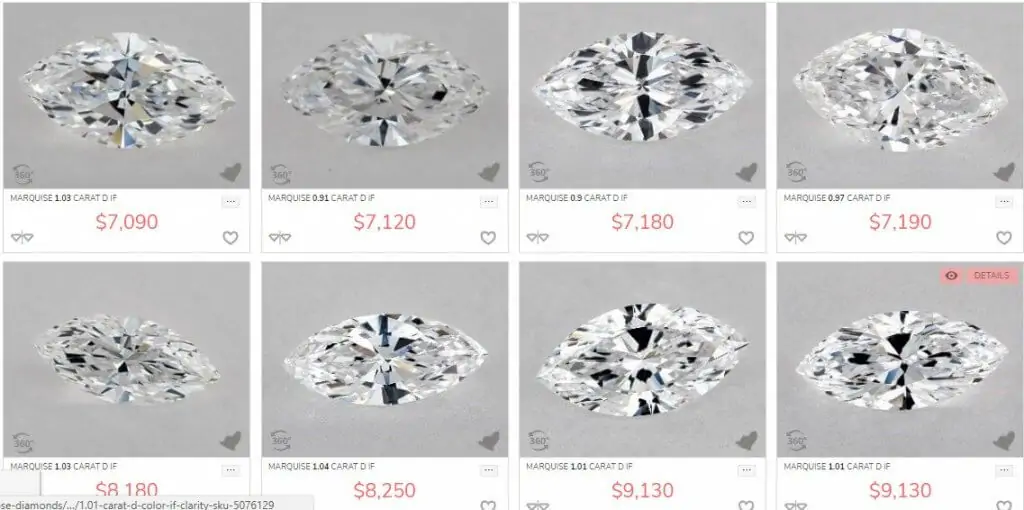
Above is a screenshot of a random selection of Marquise cut diamonds from James Allen. Although all the diamonds have similar specifications and prices, they all have varying degrees of bow-tie. The point to note is that the lab reports of these diamonds would be nearly identical, making it impossible to pick out which one has the least bow-tie.
An expertly cut marquise diamond has stunning sparkle and is a delight to behold. It’s best not to compromise on the cut quality too much when purchasing your diamond.
Choose a Protective Setting
Marquise cut diamonds are vulnerable because of their pointy ends, which means they can be in danger of chipping. As we’ve already mentioned, a quality setting can help protect the stone. There are many ring settings that will offer this protection, most notably prong settings with v-tips, halo settings, bezel settings, and vintage settings that create a buffer around the diamond.
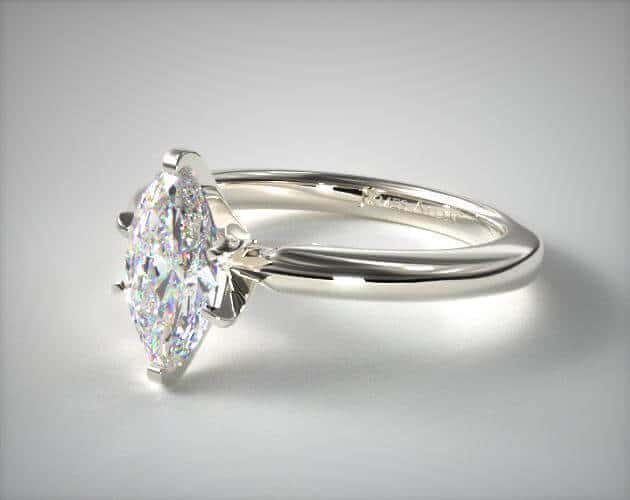
A setting that has prongs with a V-end or V-tip will be your best bet in ensuring the highest protection for your diamond. Remember, one of the most critical aspects of a marquise cut diamond is the quality of its sharp points, so when choosing the diamond, ensure that the stone’s edges aren’t compromised.
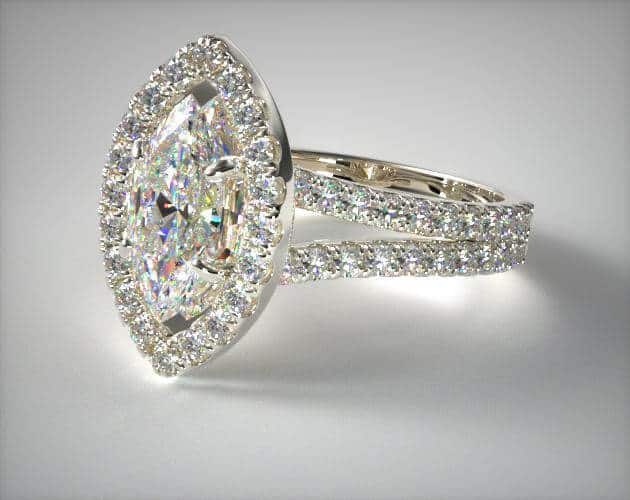
Halo settings also offer high protection for the marquise shape, as the tips are surrounded by the diamond halo. This setting also adds an extra sparkle to the ring and increases the glamour factor. You can also choose a double halo setting for even more sparkle.
Where to Buy Marquise Diamonds Online
There are many excellent places to purchase a round diamond online, be it a loose diamond or a pre-set engagement ring. Whichever retailer you decide to go with, make sure that they are reputable, are specialized in what they do and will provide you with a lab report.
Check that the certifying laboratory is recognized, such as GIA, AGS and EGL. Choose a retailer that offers high quality imagery allowing you to inspect your diamond closely, and make an informed choice. Also check the after-sales policies, especially the returns policy.
We recommend the following retailers. Check out our quick comparison of the Top Online Engagement Ring Retailers for more information.
James Allen
Why: Superior diamond imaging, competitive prices, high quality, wide range
An online giant in the diamond space, James Allen has a stunning collection of high-quality diamonds. The images and videos are unparalleled in quality and makes shopping online similar, if not better, to shopping in store.
Blue Nile
Why: Competitive prices, wide range, great quality
Known for dominating the online diamond industry since the late 1990s, Blue Nile offers one of the largest online diamond inventories. Search diamonds here at competitive prices, solid after-sales policies, and good customer service.
White Flash
Why: Superior cut quality, exclusive range, stunning designs
Whiteflash has earned an international reputation for the elite quality of their precision cut diamonds, and for their impeccable collection of designer engagement rings. Check their stunning range of diamond jewelry and loose diamonds.
Brian Gavin
Why: Impeccable quality, superior cut, small but exclusive inventory
Brian Gavin is a renowned expert in diamond cut – and it shows in their superior diamond quality. For the very best in diamonds, search their inventory of designer diamond jewelry and loose diamonds.
With Clarity
Why: Try before you buy, build your own ring, great quality
If you want to try out how a round diamond ring looks on your finger before you commit to buying one, check out With Clarity’s Home Preview Service, which is completely free. Find out more here.
Wrapping Up
Classy, sophisticated and unique, the marquise cut makes the diamond appear larger and elongates your finger. It has a romantic and historic connection that makes it a perfect choice for an engagement ring. However, this unique cut is not as brilliant as round cuts, and can have the bow-tie effect quite severely. The marquise cut is also quite vulnerable and can chip at the ends if not in a protective setting.
Overall, it’s a beautiful and uncommon choice, and one that stands out on any finger. If you’re looking to purchase a marquise diamond, we recommend starting your browsing here.


